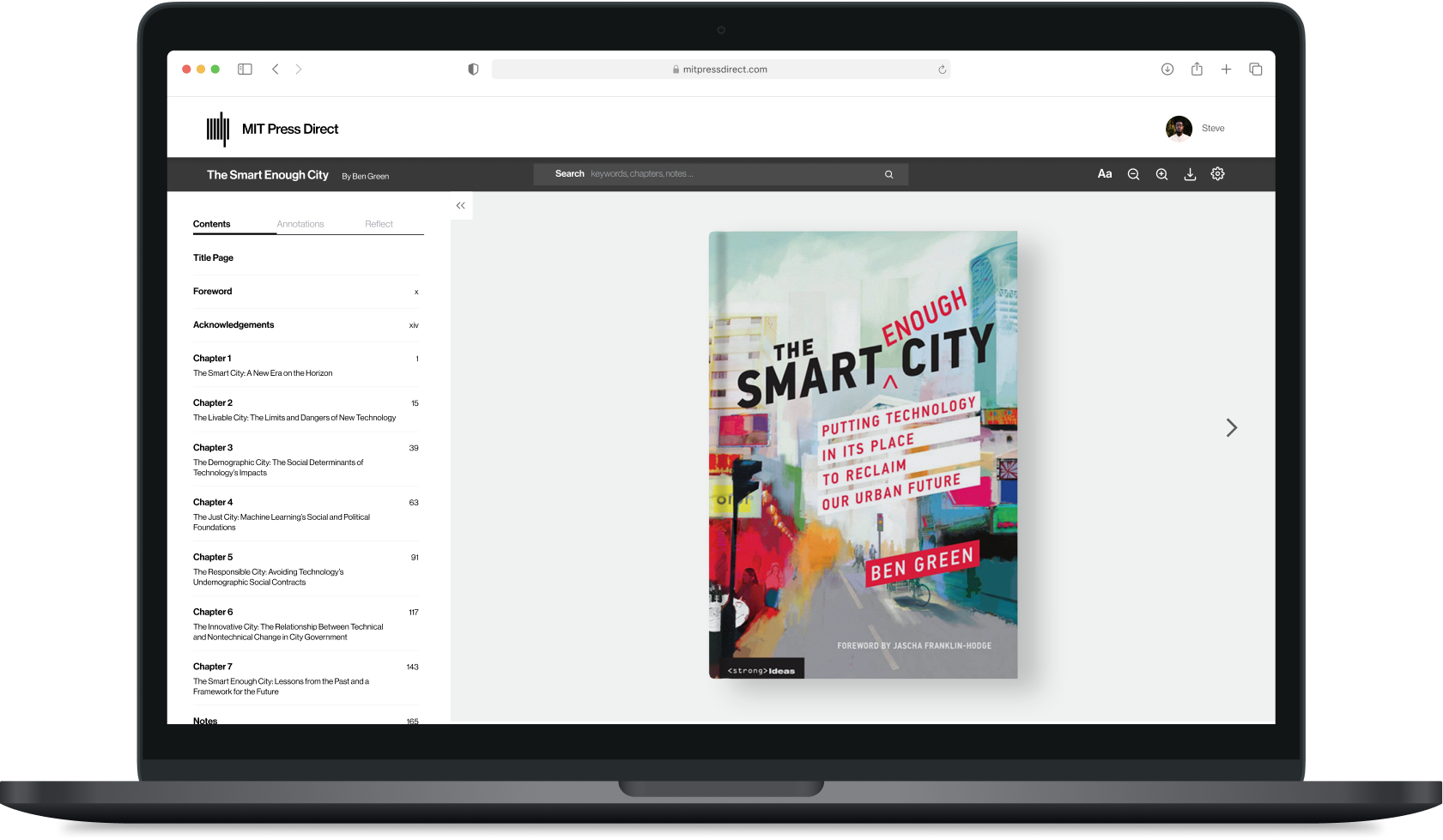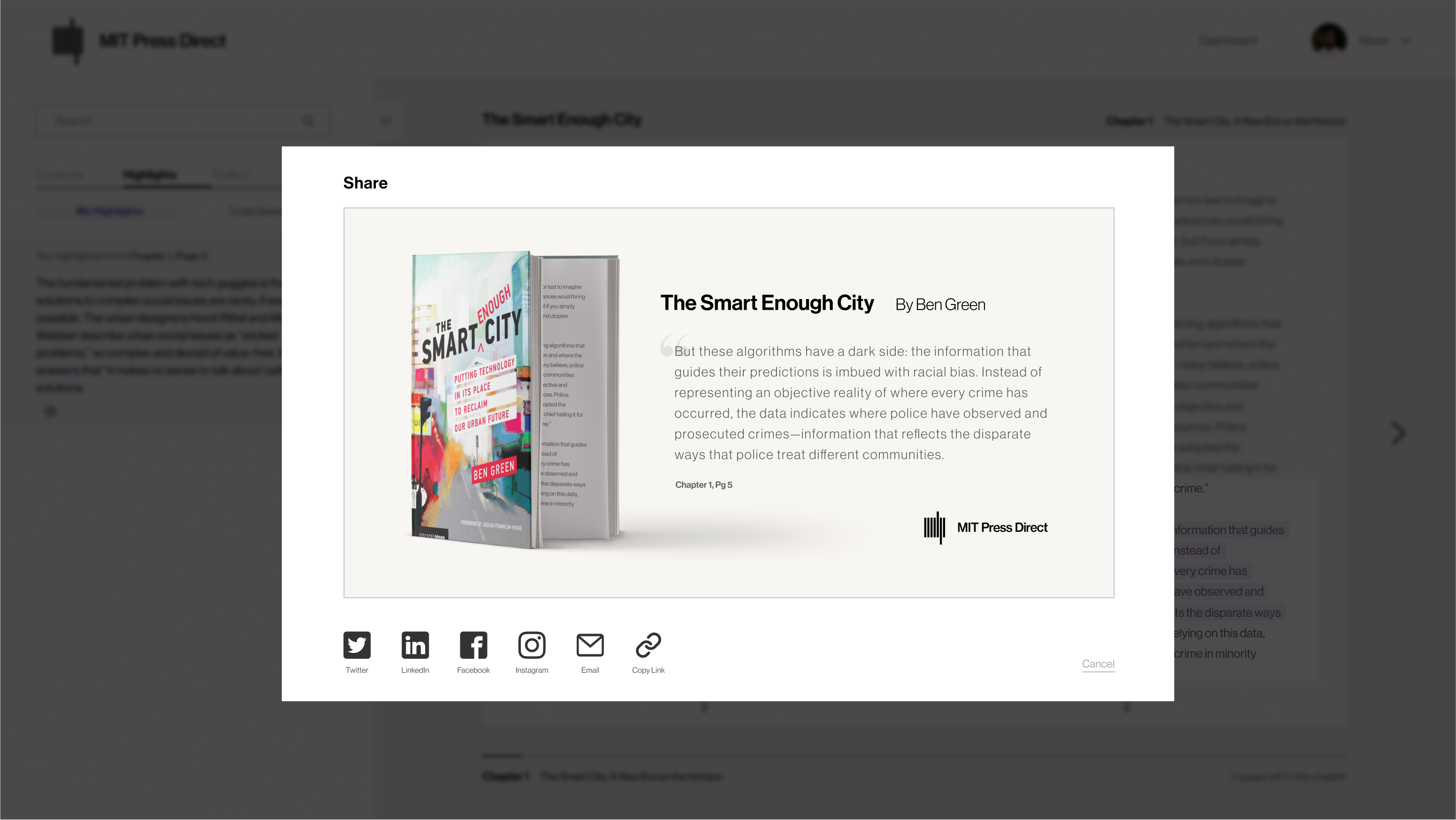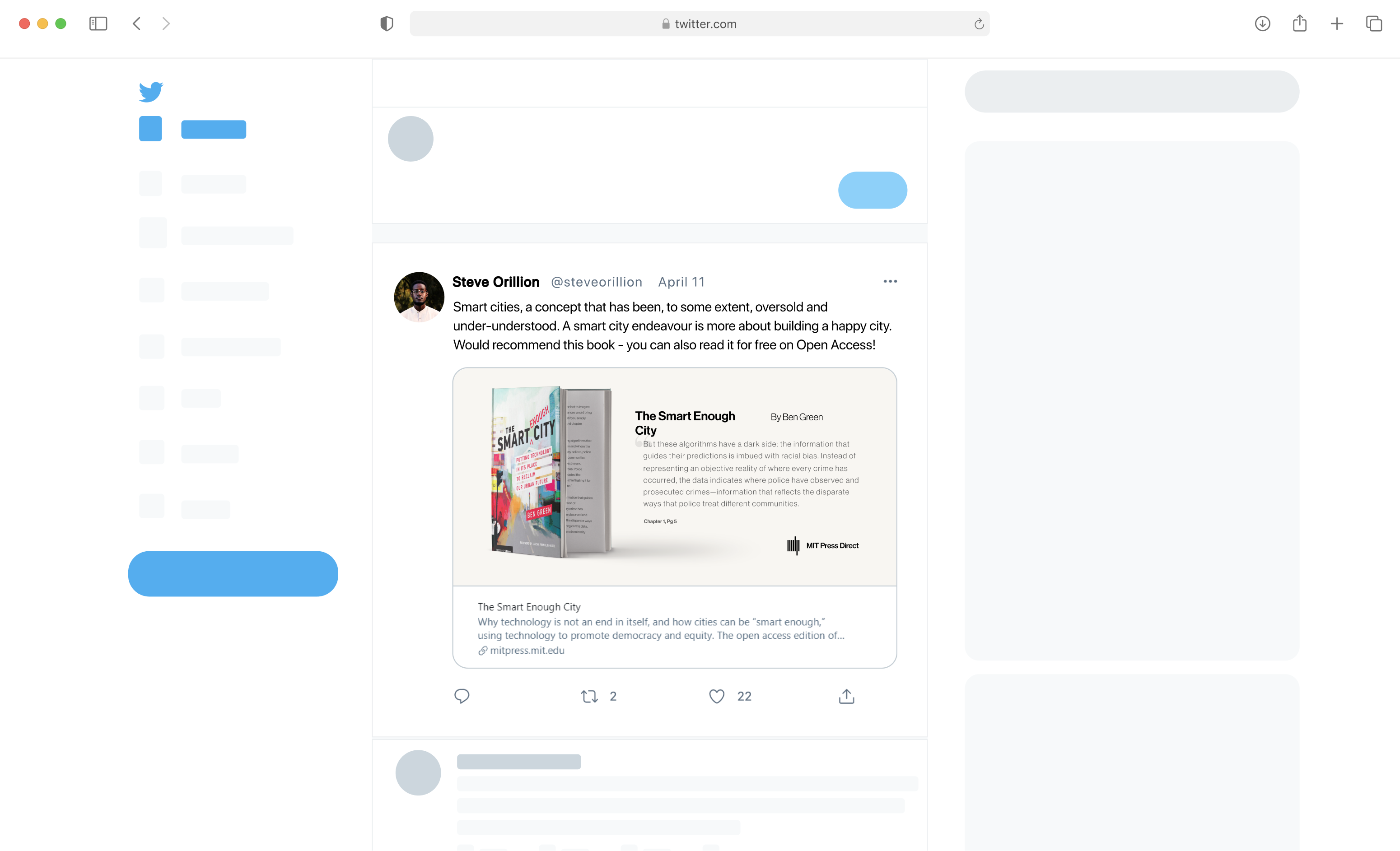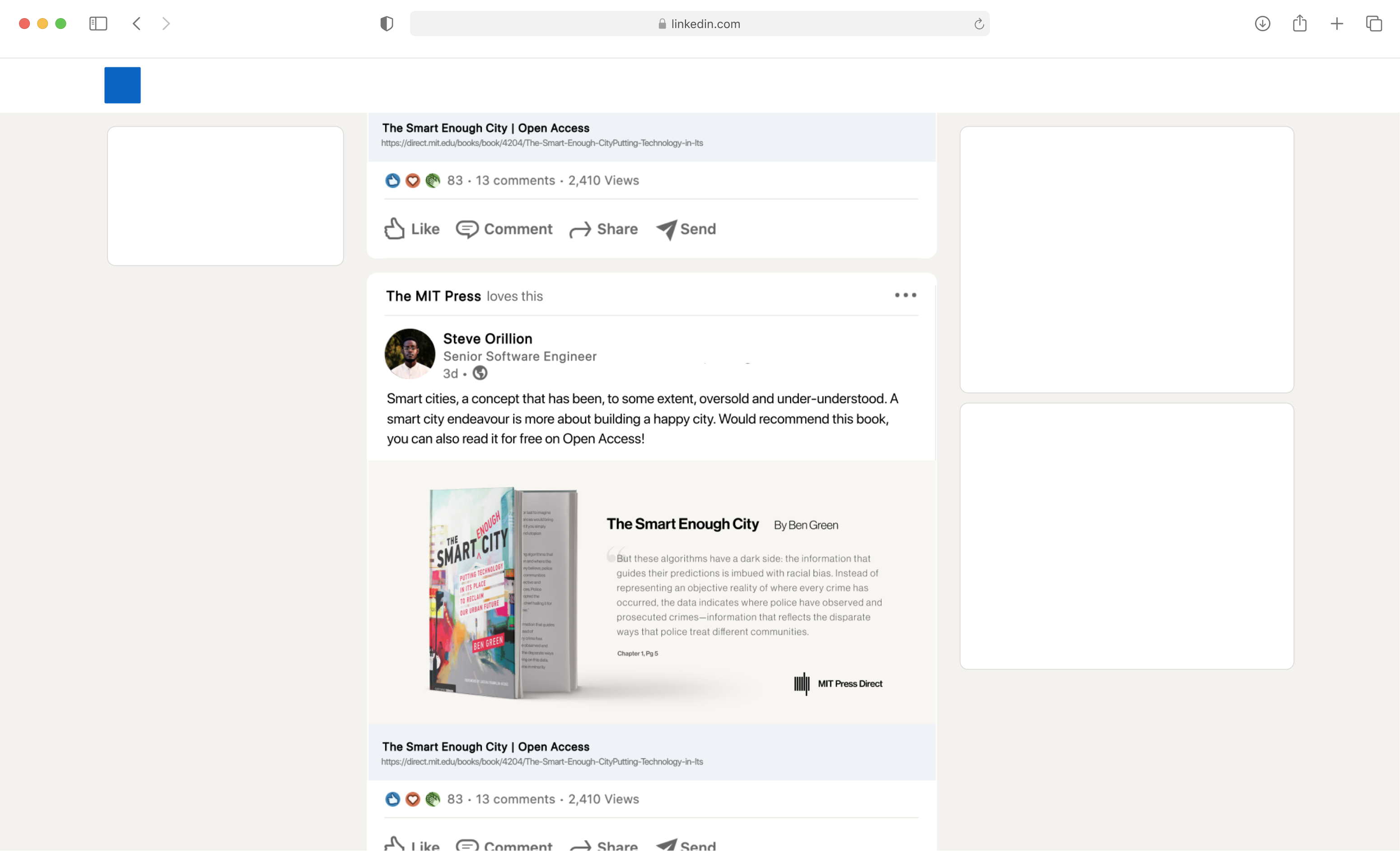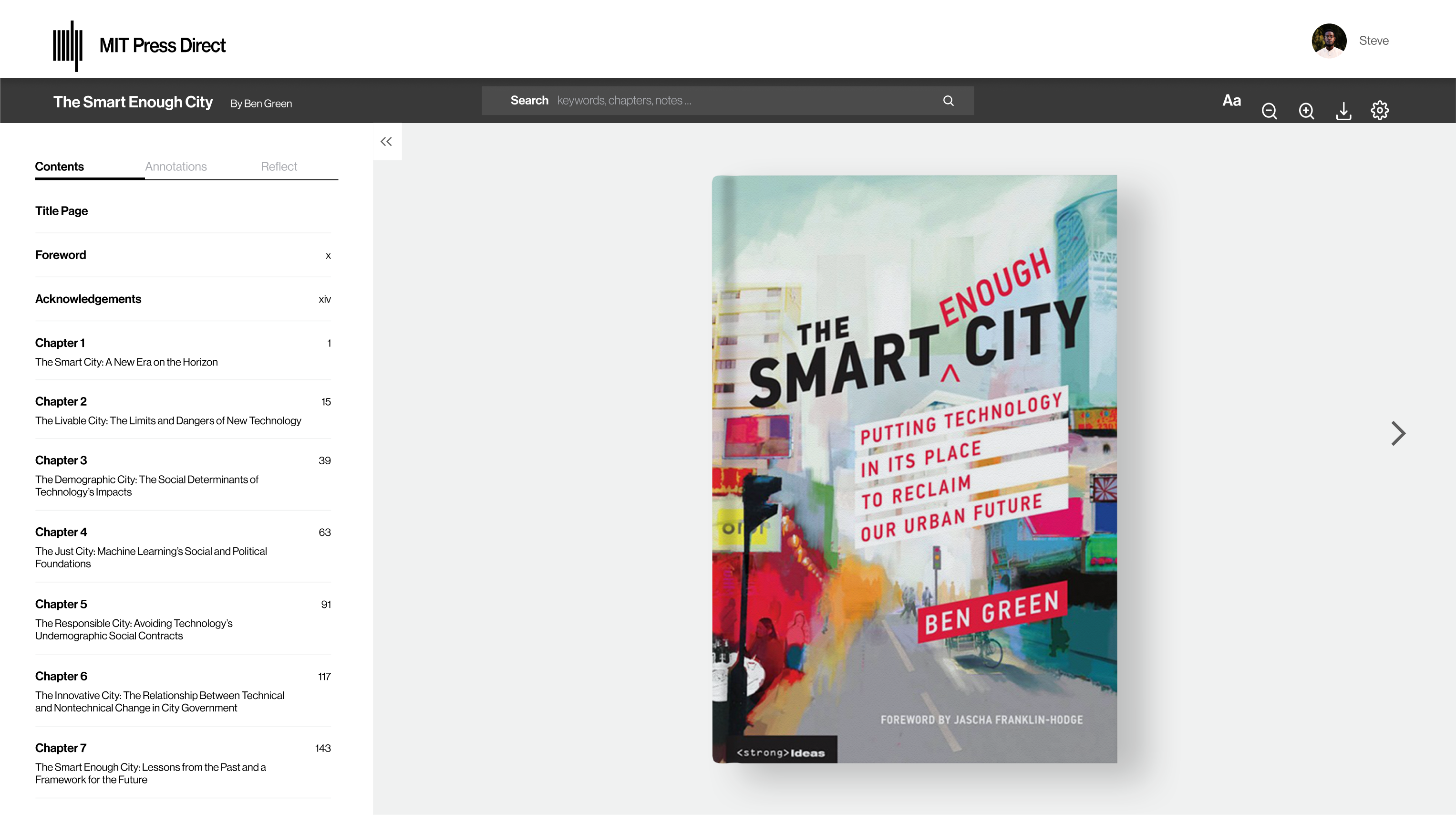Leveraging existing eBook-related resources, we proposed a redesign and extension of The MIT Press Direct platform to create a community space for readers to engage in dialogue around The MIT Press publications.
This proposal intervenes at three different stages in the reader’s journey.
Explore - Book Overview Page
The focus of the redesign was to reduce cognitive overhead and feature Open Access.
Community + Dialogue - Member Dashboard
The focus of the dashboard was to foster conversation and community, and to provide a centralized location for all reading-related activities.
Personalized Recommendations
Readers are presented with the most up-to-date titles, as well as curated events and resources relevant to the books they are currently reading. This supports guests beyond just the reading experience and prompts further exploration and discovery.
Engaging in Dialogue: A Shared Experience
Readers can now create and join groups directly through The MIT Press Direct, similar to collaborative functions on Google Drive or Slack. Teams can read Open Access titles together and start discussions through their shared annotations and comments.
Graphic Design executed by myself.
Visual design, content strategy, and interaction design executed by Ola Sukour. Copywriting and content strategy executed by Corrina Tang and Eliza Lim
Reading + Reflections - eReader Experience (New Feature)
The focus of the in-broswer eReader was to provide an accessible and streamlined interface to read, reflect, and stay engaged with communities.
Although I was involved in all aspects of the project, I was primarily responsible for curating and executing this eReader experience. I designed and prototyped the interface, supported by research that I conducted both individually and with my team. I also wrote 90% of the UI and UX copy.
